A horse that backs up sluggishly is carrying his weight on his front end. You can pull on the reins, but that won’t speed him up. The solution is to shift his weight onto his hind end so he’s in a position to move with speed and agility.
How to do this? When I’m trying to change how a horse is using a certain part of his body, I don’t ask him to adjust that body part. Instead, I ask him to do something he can’t do without self-adjusting the body part in question.
So, to speed up a sluggish reverse, I ask the horse for a 180-degree turn. He can’t do that without shifting his weight onto his hind end. Then I ask for the backup again—it should be a little lighter and quicker. Then, whenever he starts feeling “sticky” again in his backup, I ask for another half turn—alternating which way I turn to keep him guessing.
I’ll describe how I do all that, so you can fix your horse’s lazy backup. As a bonus, this exercise will also prove handy in other problem areas. That’s because in all performance events—or even out on the trail—the ability to shift weight onto the hind end is a prerequisite to doing just about anything well.
Here are the details you need to fix your horse’s lazy backup.
1. Ask for the Backup
Using subtle rein pressure, I’m asking my horse to back up. He’s responding, but barely. His hind end isn’t engaged—his hocks aren’t bent, his muscles aren’t noticeably contracted, and his left hind leg is almost perpendicular to the ground instead of planted forward, under his belly.
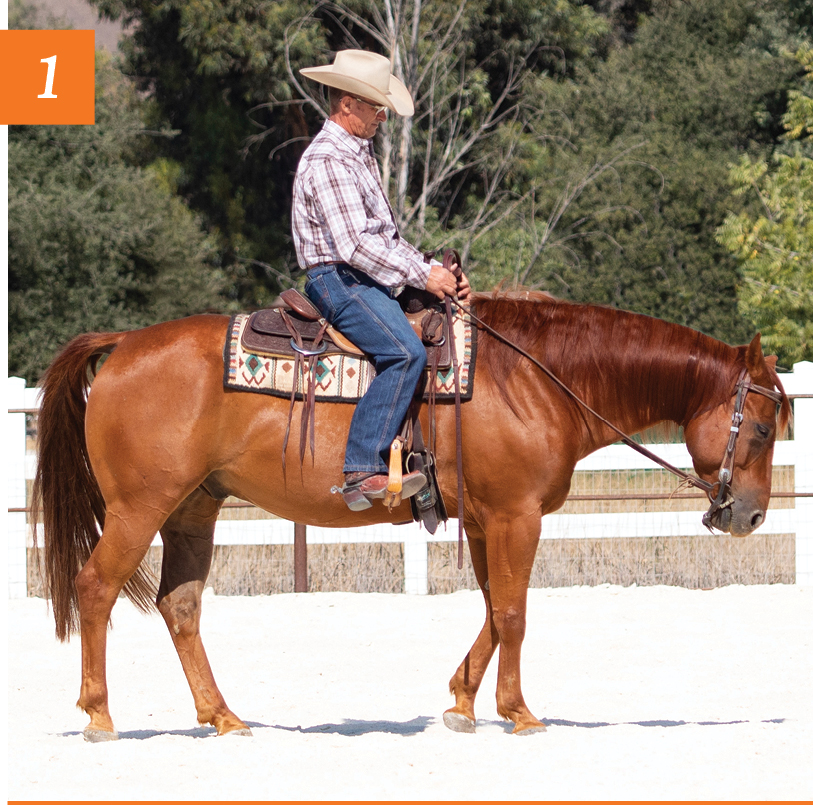
2. Don’t Just Pull Back on Reins
Here I’m showing you what not to do: attempt to encourage your horse to back up quicker by pulling harder on the reins. As you can see, it’s not working. My horse has responded by raising his head, but his hind end is still unengaged, his steps are small, and he’s not moving any faster than he was before.
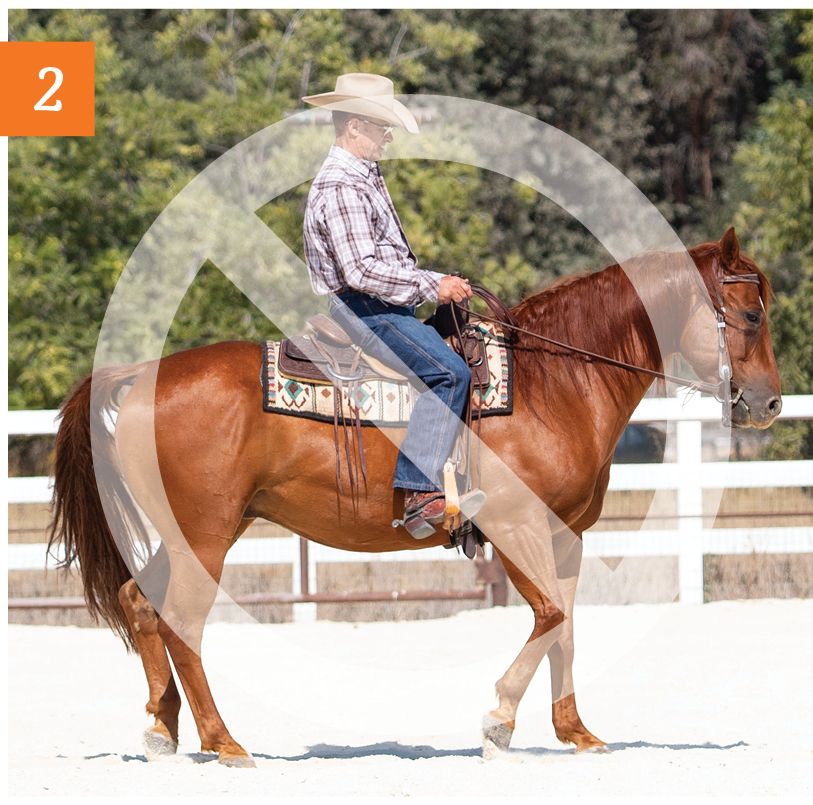
3. Ask for a Half-Turn Instead
To solve the problem, I’ve got to get that hind end activated. I’ll achieve that by asking for something my horse can’t do without shifting his weight backward. With pressure from an opening right rein, a little outside rein laid against his neck, and a little outside leg at the cinch if needed, I’m cueing my horse to make a 180-degree turn to face in the opposite direction. Even at the very beginning of this turn, note how different his hind end looks here than it does in photos 1 or 2.
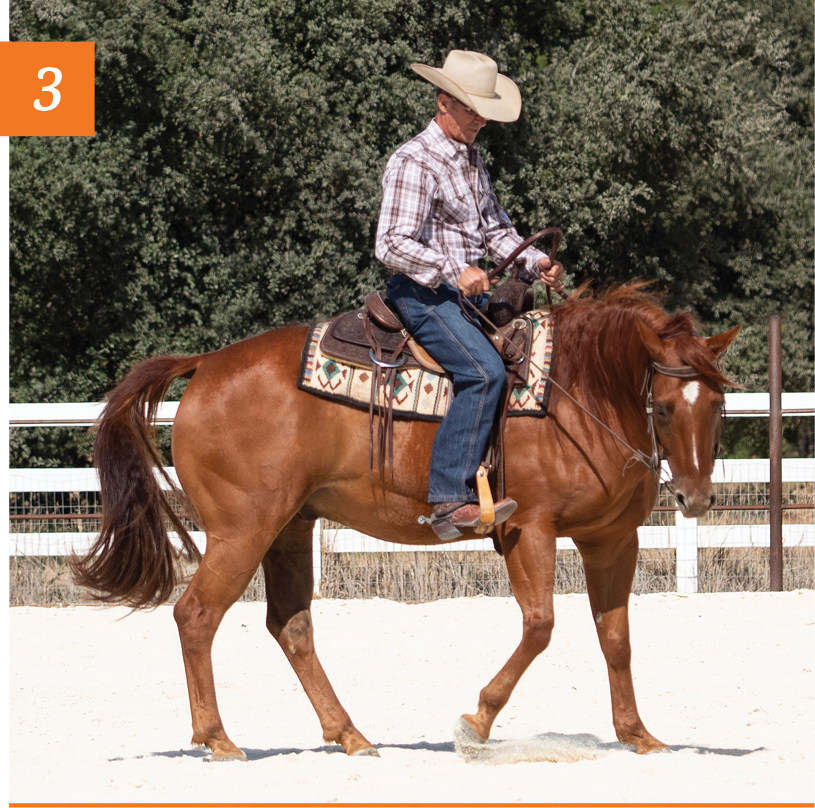
4. Continue in the New Direction
When my horse has completed the 180 turn, I release all cues for a moment, then ask him to back again, as in the photo. Note that his backup is becoming a bit more active. When it becomes sluggish again, I’ll do another 180-degree turn, but this time going the opposite way.
Changing directions every time you ask for a turn is important because it enables you to capitalize on your horse’s natural tendency to anticipate. He’s trying to predict what you want, but because he’s never sure whether you’re going to ask him to turn to the right or the left, he has to keep his weight on his hind end to make going in either direction possible.
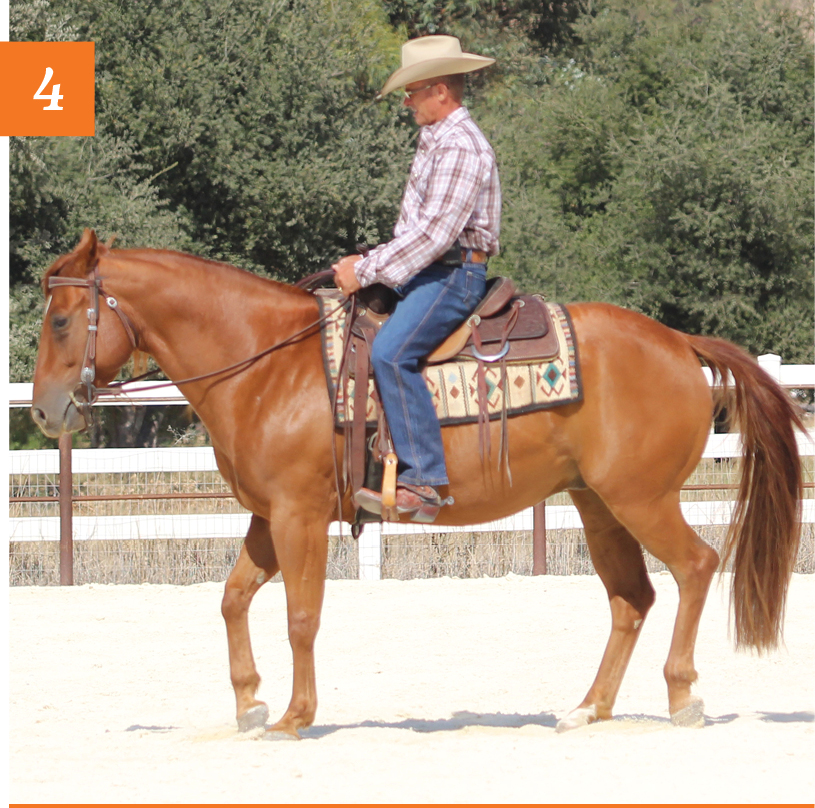
5. The End Goal: Light and Quick
After several turns in both directions, my horse is using his body much differently in this lighter, quicker backup. Look how far underneath his barrel his left hind leg is now. Look how flexed his hocks are, and how his hindquarter muscles bulge. Look how his hips are now lower than his withers.
Also note the almost-drape in my reins—my horse’s improved body position makes him light and responsive, so light cueing is all that’s required.
Practice this exercise any time your horse is lazy in his backup, and before long he’ll be consistently giving you an energetic reverse.
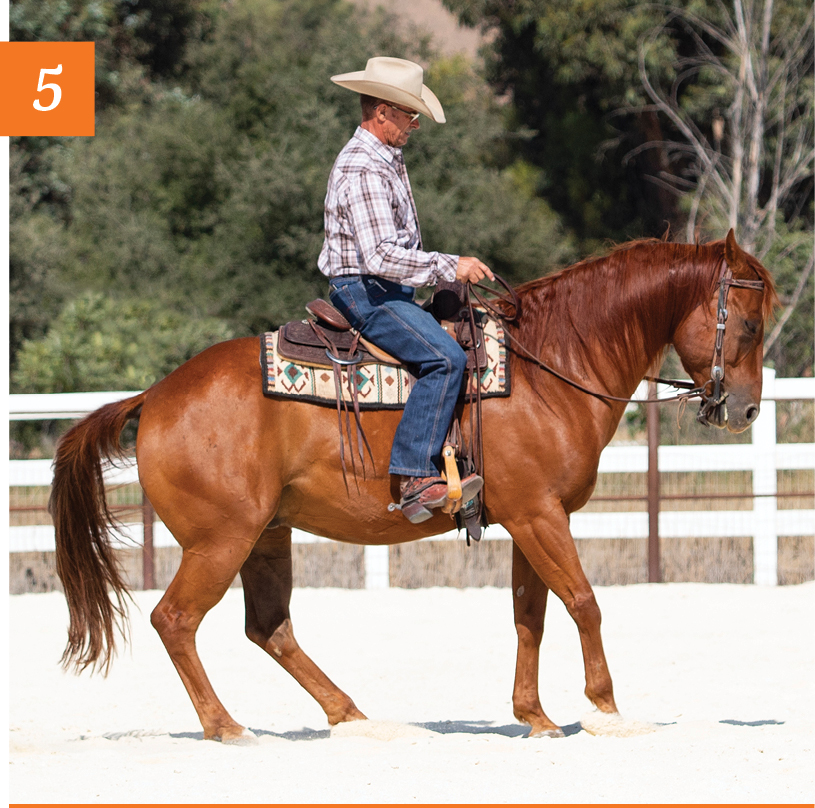
If He’s Crooked
If your horse isn’t straight as he backs, then when you ask for the 180-degree turn, go in the opposite way from his crookedness. For example, if his shoulder leans to the left as his hip pops out to the right, turn him to the right to correct that drift.
Watch Warwick!
Click here to watch Warwick Schiller’s how-to video for this speed-the-backup exercise.

Australian clinician and reiner Warwick Schiller lives in Hollister, California. He’s an NRHA reserve world champion and represented Australia at the 2010 and 2018 FEI World Equestrian Games. He solves horse problems by changing the rider’s perspective. Learn more about Schiller and find his clinics, books, and videos at warwickschiller.com.






